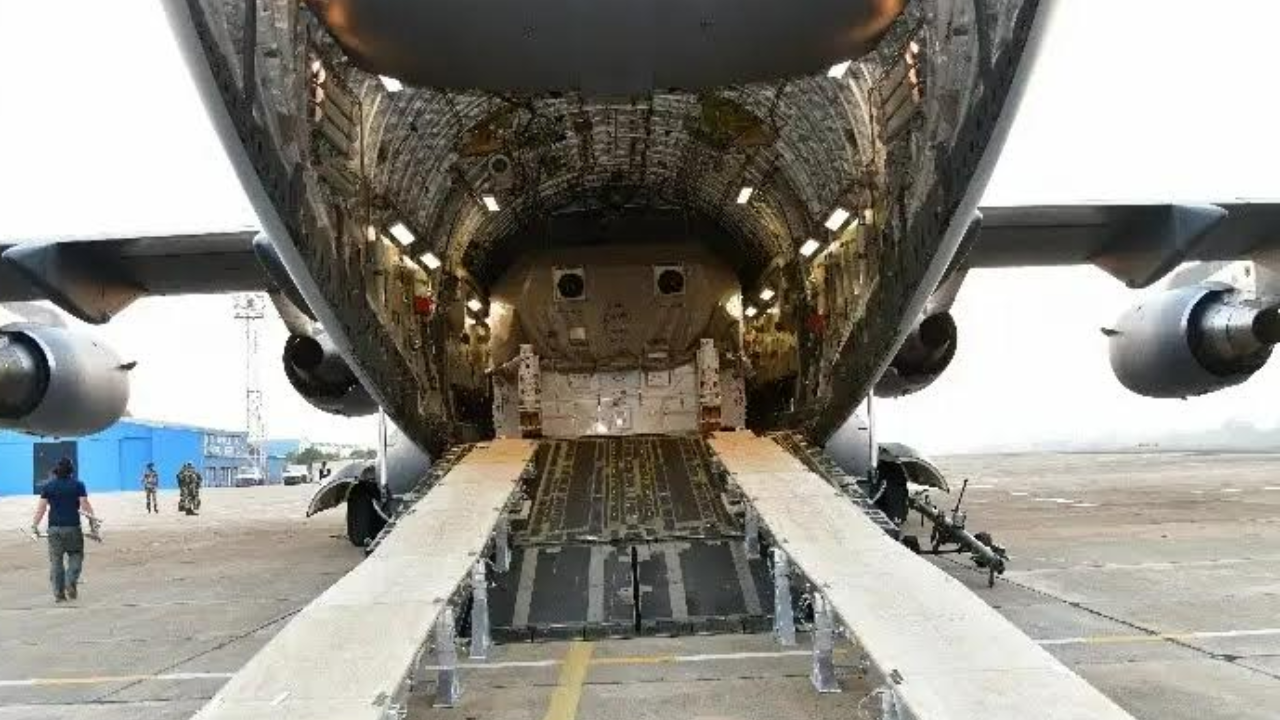India
NISAR satellite: Isro receives payload of world’s most expensive sat NISAR from US | India News

[ad_1]
New Delhi: The payload of the world’s most expensive satellite NASA-ISRO Synthetic Aperture Radar (NISAR) arrived in India after a US Air Force C-17 aircraft landed in Bengaluru from California (from Nasa’s JPL) on Wednesday. The 14,000-km final journey of the SUV-size payload marks a key milestone in the US-India ties in space collaboration.
“Touchdown in Bengaluru! @ISRO receives NISAR (@NASA-ISRO Synthetic Aperture Radar) on a @USAirforce C-17 from@NASAJPL in California, setting the stage for final integration of the Earth observation satellite, a true symbol of #USIndia civil space collaboration,” tweeted the US consulate general in Chennai.
After getting the payload, Isro said on Wednesday, “The integrated payload has been moved to UR Rao Satellite Centre, Bengaluru, for carrying out further testing and assembly with Isro’s satellite bus.” NISAR is expected to be launched in January next year from Sriharikota into a near-polar orbit and will operate for a minimum of three years. The low-earth orbit satellite will map the entire globe every 12 days.
The estimated $1.5 billion NISAR project, “will measure the Earth’s changing ecosystems, dynamic surfaces and ice sheet collapses, providing information about biomass, sea level rise, groundwater and natural hazards, including earthquakes, tsunamis, volcanoes and landslides” as per Nasa.
NISAR will be the first radar of its kind in space to systematically map Earth, using two different radar frequencies (L-band and S-band) to measure changes in the Earth’s surface less than a centimeter across. Under the terms of the 2014 agreement, Nasa is providing the mission’s L-band SAR, a high-rate telecommunication subsystem for scientific data GPS receivers, a solid-state recorder and a payload data subsystem. Isro, on the other hand, is providing the satellite bus, an S-band SAR, launch vehicle (GSLV Mk II), and associated launch services.
The NISAR project was envisioned by Nasa and Isro eight years ago as a powerful demonstration of the capability of radar as a science tool and help study Earth’s dynamic land and ice surfaces.
Data collected from NISAR will also reveal information about the evolution and state of the Earth’s crust, help scientists better understand the planet’s natural processes and changing climate, and aid future resource and natural hazard management. NISAR data will also be used to improve agriculture management and food security by providing information about crop growth, soil moisture, and land-use changes.
“Touchdown in Bengaluru! @ISRO receives NISAR (@NASA-ISRO Synthetic Aperture Radar) on a @USAirforce C-17 from@NASAJPL in California, setting the stage for final integration of the Earth observation satellite, a true symbol of #USIndia civil space collaboration,” tweeted the US consulate general in Chennai.
After getting the payload, Isro said on Wednesday, “The integrated payload has been moved to UR Rao Satellite Centre, Bengaluru, for carrying out further testing and assembly with Isro’s satellite bus.” NISAR is expected to be launched in January next year from Sriharikota into a near-polar orbit and will operate for a minimum of three years. The low-earth orbit satellite will map the entire globe every 12 days.
The estimated $1.5 billion NISAR project, “will measure the Earth’s changing ecosystems, dynamic surfaces and ice sheet collapses, providing information about biomass, sea level rise, groundwater and natural hazards, including earthquakes, tsunamis, volcanoes and landslides” as per Nasa.
NISAR will be the first radar of its kind in space to systematically map Earth, using two different radar frequencies (L-band and S-band) to measure changes in the Earth’s surface less than a centimeter across. Under the terms of the 2014 agreement, Nasa is providing the mission’s L-band SAR, a high-rate telecommunication subsystem for scientific data GPS receivers, a solid-state recorder and a payload data subsystem. Isro, on the other hand, is providing the satellite bus, an S-band SAR, launch vehicle (GSLV Mk II), and associated launch services.
The NISAR project was envisioned by Nasa and Isro eight years ago as a powerful demonstration of the capability of radar as a science tool and help study Earth’s dynamic land and ice surfaces.
Data collected from NISAR will also reveal information about the evolution and state of the Earth’s crust, help scientists better understand the planet’s natural processes and changing climate, and aid future resource and natural hazard management. NISAR data will also be used to improve agriculture management and food security by providing information about crop growth, soil moisture, and land-use changes.
#NISAR #satellite #Isro #receives #payload #worlds #expensive #sat #NISAR #India #News





